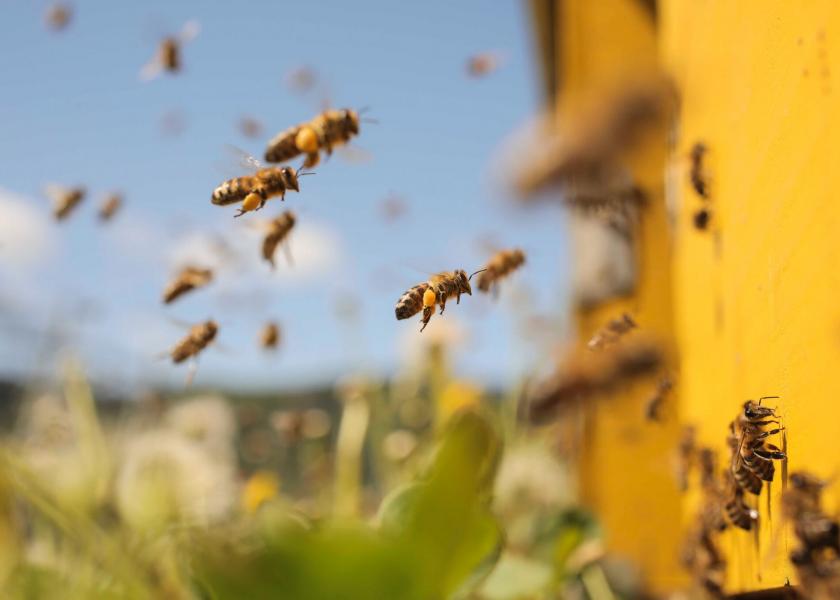9 Ways to Help Protect Pollinators Now

With planting season underway, an agriculture industry collaboration announces its fourth-annual BeSure! campaign to promote best management practices for various product applications on the farm.
“Farmers across the Midwest have really embraced this program, and we’re just offering up some reminders” to support bees, butterflies and other pollinators, says Caydee Savinelli, pollinator and integrated pest management (IPM) stewardship lead for Syngenta.
Farmers can help protect pollinators this season with these nine practices:
Read and follow all product labels and seed tags prior to planting and application.
All insecticides that are toxic to bees have warnings on the label, according to Purdue University Extension. On older insecticides, these warnings are often hard to find. However, many newer insecticides have special “Protection of Pollinator” statements and icons on the label.
Purdue Extension’s complete article, Protecting Pollinators in Agronomic Crop Production, is available at https://bit.ly/3LmeOEO
Clean up or cover any seed spills. That will prevent birds and wildlife from eating the seed, which has typically been treated with insecticides, fungicides and other products, Savinelli notes.
Use the least toxic product options available.
Not all insecticides are equally toxic to pollinators, Purdue Extension reports. When possible, select the least toxic insecticide that will still provide good control of the target pest.
Avoid dust whenever possible. This includes avoiding insecticides that have dust formulations. It also includes following practices that minimize the amount of planting dusts you create. It may be unavoidable in some cases to completely eliminate dust when planting treated corn and soybean seeds. However, treated seed guidelines advise growers to account for wind speed and direction during planting to minimize dust.
“It’s really helpful to use a seed lubricant to prevent dust, especially if you use a vacuum planter,” Savinelli told Chip Flory, host of AgriTalk, during a discussion on Monday.
Pay attention to when you apply. Apply foliar insecticides in the late evening, night, or very early morning when fewer pollinators are foraging. Applying at these times can also minimize the spray drift and volatilization that can occur during the higher heat of the day, Purdue Extension says.
Keep applications on target. Do not apply insecticides when winds favor drifting. And whenever possible, use ground applications instead of air applications.
Pay attention to your surroundings. Avoid spraying when the crop or other plants in the field or nearby fields are in bloom. Keep in mind that those flowering plants may be weeds — pollinators will still be foraging on those flowers.
Communicate and cooperate. When growers, pesticide applicators, and beekeepers communicate and cooperate, many bee poisoning problems can be prevented. For example, honey bees forage far beyond their colony, which means you should notify all beekeepers within 2 to 3 miles of the area to be treated at least the evening before an insecticide application. If beekeepers are to move or confine their bees, they must do so the night before the treatment.







